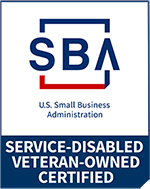Inclusion, Diversity, Equity, and Access (I-DEA) Action Plan and Executive Order Implementation
Client:
Department of Veterans Affairs (VA), Office of Resolution Management, Diversity, and Inclusion (ORMDI)
Challenge:
In 2021, the Biden Administration issued several Executive Orders placing renewed emphasis on the Federal Government’s commitment to Inclusion, Diversity, Equity, and Access. The VA formed a Task Force, and with ORMDI, have identified strategic opportunities across VA’s vast ecosystem of Inclusion, Diversity, Equity, and Access (I-DEA). Twenty actionable recommendations were identified to eliminate barriers and create access points for underserved communities, thereby ensuring all VA employees, Veterans, their families, caregivers, and survivors have equitable treatment and experiences when interacting with VA. ORMDI’ s mission is to promote a healthy working environment through the prevention, resolution, and processing of workplace disputes. The current organizational structure and decentralized execution of diversity and inclusion efforts across the VA have created a significant opportunity to refocus these efforts and ensure equity in the delivery of healthcare, services, and benefits.
Approach:
The team is supporting ORMDI to promote a healthy working environment through the prevention, resolution, and processing of workplace disputes. Stemming from the recent policy initiatives of the Biden-Harris Administration, ORMDI is exploring opportunities to refocus and bring greater cohesion to the various diversity and inclusion efforts across VA, which are currently executed in a decentralized manner. The team is assessing the feasibility and defining and operational plans for 20 recommendations on strategic opportunities for enhancing VA’s ecosystem with improved inclusion. To assist with governance and decision-rights, the team manages a bi-weekly I-DEA Sub-Council to enable collaboration across VA executive leadership. The Sub-Council acts as an enterprise-wide policy-making body, providing recommendations via the Evidence Based Policy Council to the VA Operations and Executive Boards.
Results:
While this project is still in its first year, the team has assisted ORMDI by:
- Coordinating and facilitating I-DEA Sub-Council executive leadership discussions to enable strategic direction to and promote continuity of I-DEA initiative.
- Managing feasibility assessments across several domain-specific workstreams to determine viability and implementation approaches for recommendations.
- Developing individual implementation plans for each recommendation, including comprehensive strategic communications and change management approaches.
- Bringing together a robust strategic communication and change management group to bring ‘people’ along while executing the plan for improved inclusion and diversity.


